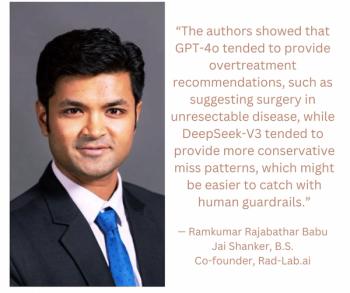
What New Interventional Radiology Research Reveals About Treatment for Breast Cancer Liver Metastases
Emerging research from the recent Society of Interventional Radiology (SIR) conference suggests the combination of transarterial radioembolization (TARE) and immunotherapy may offer improved three-year survival outcomes for patients with breast cancer and liver metastases.
For patients with breast cancer liver metastases, the combination of immunotherapy and transarterial radioembolization (TARE) may significantly enhance survival outcomes over other treatment options, according to new research presented at the recent Society of Interventional Radiology (SIR) conference.
In a recent interview, lead study author Amy Deipolyi, M.D., pointed out that approximately one-fifth of breast cancer deaths are due to liver metastasis. In her experience with subspecializing in the treatment of patients with breast cancer, Dr. Deipolyi has found that half of these patients will develop metastatic breast cancer with the metastasis frequently occurring in the liver.
In light of these sobering trends, Dr. Deipolyi and her colleagues sought to compare TARE/immunotherapy to transarterial chemoembolization (TACE)/immunotherapy, TARE/chemotherapy, and TACE/chemotherapy in a total cohort of 418 patients with breast cancer and liver metastases.
The study authors found that TARE/immunotherapy offered the highest median overall survival (38 months) and the highest three-year survival rate at 52 percent in comparison to 48 percent for TACE/immunotherapy, 45 percent for TARE/chemotherapy and 40 percent for TACE/chemotherapy.
Dr. Deipolyi said these multicenter comparative study findings align with previous single-center retrospective work comparing Y-90 radioembolization and chemoembolization in the treatment of breast cancer liver metastases.
“The overall impression you get is that Y-90 (radioembolization) yields better imaging results, more objective responses, and is better tolerated with fewer side effects,” posited Dr. Deipolyi, the chief of interventional radiology at the Charleston Area Medical Center in Charleston, W.V., and associate professor at West Virginia University.
Lending further credence to the comparative study findings presented at the SIR conference was the fact that the cohort was drawn from a query of 68 health-care organizations via the federated TriNetX database, which allows real-time access to research data collection from a network of 145 hospital organizations, according to study co-author Frank Annie, Ph.D., a clinical research manager and assistant professor in the Department of Cardiology at the Charleston Area Medical Center in Charleston, W.V.
(Editor’s note: For related content, see “
For more insights from Drs. Deipolyi and Annie, watch the video below.
Reference
1. Deipolyi A, Annie F, Bryce Y. Chemoembolization vs. radioembolization for breast cancer liver metastasis: retrospective multi-institution observational study. J Vasc Interv Radiol. 2025;36(3):S56-57. Available at:
Newsletter
Stay at the forefront of radiology with the Diagnostic Imaging newsletter, delivering the latest news, clinical insights, and imaging advancements for today’s radiologists.




























